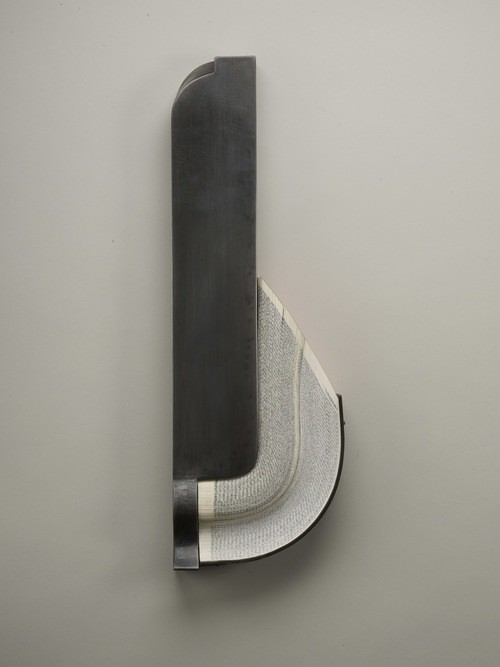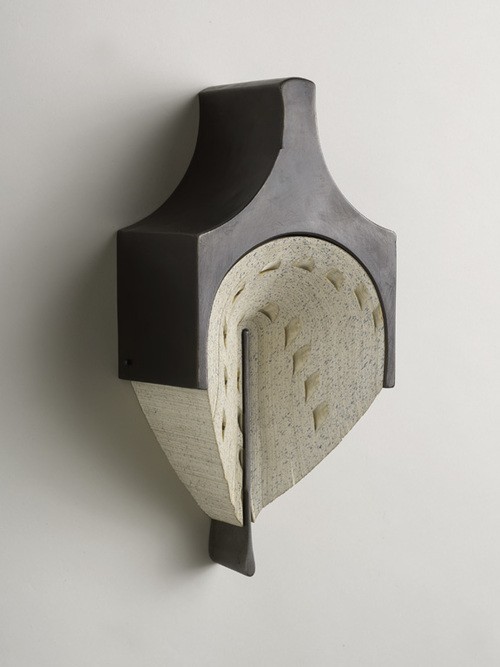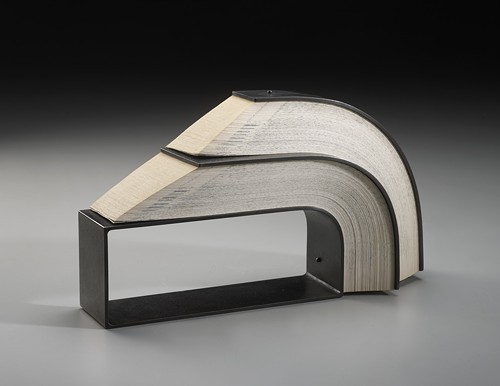
As a part of its ongoing “Tributaries” series, the Metal Museum is currently showing the work of Andrew Hayes, an emerging sculptor and metalworker with a distinct eye for form.
Hayes uses steel and “altered books” to form his works. The steel is exactingly cut to form parameters for old book pages. The pages are arrayed so that attention is drawn to the mass of their edges— gilded, watermarked or tiered, drawn from antique reference books. The steel pieces that support the pages could be seen as parabolic book covers, but the visual analogy is not a heavy-handed one.
[jump]
The works are titled associatively. One piece, Spectrum, has a form that loosely resembles the curve of light when refracted through a crystal. It is one of the more traditionally sculptural works in the exhibition, perhaps because it calls to mind the open-ended geometries of many 20th century modernist sculptors. Ballistae, on the other hand, looks almost instrumental: thick-hewn metal pieces are folded in a harp-like shape around marbled pages. The name is a reference to a medieval weapon.


Hayes work is slightly uncanny. His pieces have the feel of well-executed tools— they are clean, simple, unpretentious. They could almost be a lot of things; almost call to mind many forms. But they don’t. Hayes’ artistry happens in the quiet space around his works’ uselessness.
The viewer is left face-to-face with simple materials that have transcended themselves. Hayes’ books lose their bookishness but gain a kind of ineffable material presence. The weighty steel appears defiantly light. Looking at Hayes sculptures is like trying to make out shapes in a dark room— the tired character of objects is replaced by a searching form. There is a particular psychic sensation that goes along with this sort ‘unearthed’ formal work, one that is difficult to achieve and that Hayes plainly understands.
Joel Parsons, the Metal Museum’s exhibitions designer, says, “[the artist] is something of a formalist. He sets up parameters and works within them.”
Hayes works read like deceptively simple proofs for complex ideas. The young artist, who just completed a core fellowship at the prestigious Penland School of Crafts, may not be doing anything particularly new, but his work is something more special than new: it is rare.
Through March 2nd